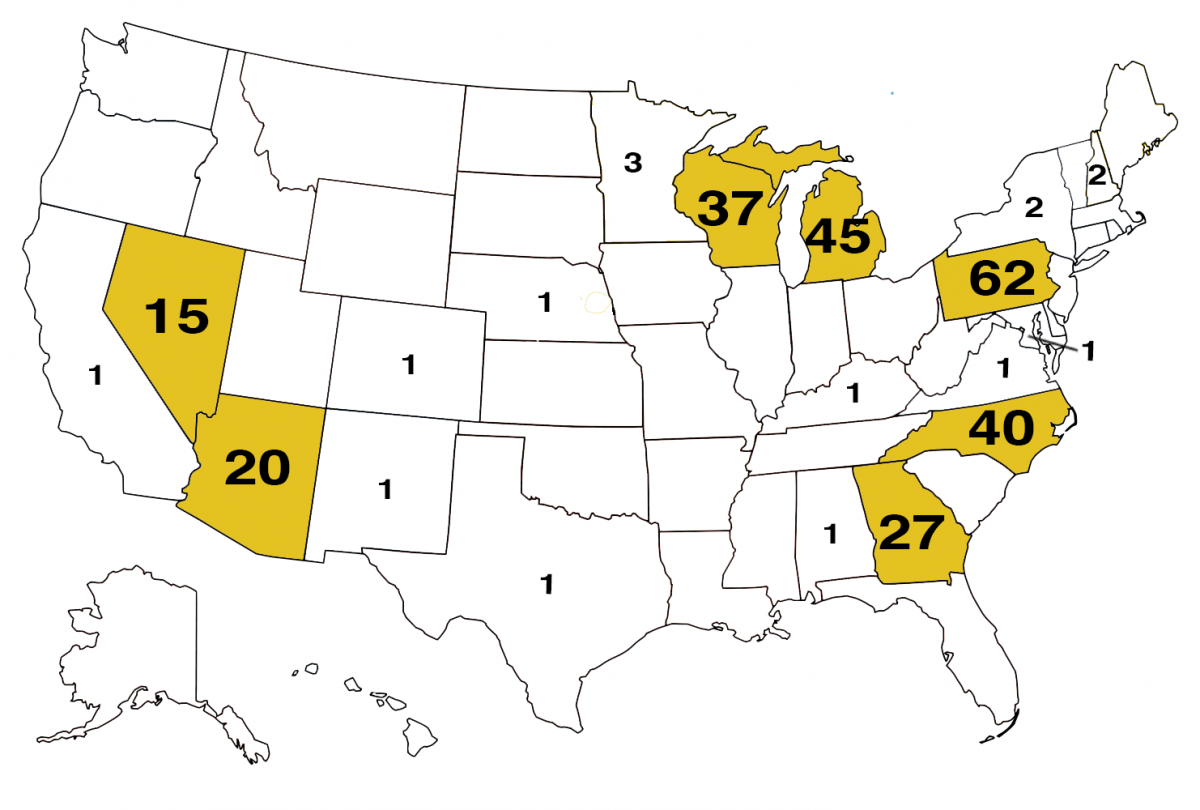The 2024 general-election campaign for President was concentrated on just 7 closely divided states. These 7 states have a little less than 20% of the U.S. population. That is, 80% of Americans are mere spectators to the 2024 presidential election.
Because of state winner-take-all laws for awarding electoral votes, presidential candidates only pay attention to voters in closely divided battleground states. These are states where the two-party vote is in the narrow range of about six percentage points (47%-53%).
The map shows the locations of the 262 general-election campaign events of the 2024 presidential campaign. Of the 262 events, 246 (94%) were in the 7 closely divided battleground states.
The data for this map was compiled by FairVote. The details of each of the 262 general-election campaign events are shown in FairVote's Tracker.

The 43 non-battleground states and the District of Columbia are divided almost equally between the two major political parties.
● The Republican nominee can count on 218 electoral votes from 24 states.
● The Democratic nominee can count on 225 electoral votes from 19 states and DC.
It takes 270 electoral votes to win the Presidency.
|
** Maine and Nebraska award one electoral vote for each congressional district (and two electoral votes statewide). Maine’s 2nd district (the northern part of the state) and Nebraska’s 2nd district (the Omaha area) are shown separately in this table because these particular districts are competitive in the presidential election in some years. Note that Maine's 2nd district was not competitive in 2024, and hence received no general-election campaign events. Maine’s remaining three non-competitive electoral votes and Nebraska’s remaining four non-competitive electoral votes are shown separately in this table.
A discussion of the concentration of earlier presidential campaigns is found in chapter 1 of our book Every Vote Equal: A State-Based Plan for Electing the President by National Popular Vote. The book may be read or downloaded for free at www.Every-Vote-Equal.com.
- In 2020, almost all (96%) of the general-election campaign events (204 of 212) occurred in the 12 states where the Republican percentage of the two-party vote was in the narrow eight-point range between 46% and 54%.
- In 2016, almost all (94%) of the general-election campaign events (375 of 399) occurred in the 12 states where the Republican percentage of the two-party vote was in the narrow eight-point range between 47% and 55%.
- In 2012, 100% of the 253 general-election campaign events occurred in the 12 States where the Republican percentage of the two-party vote was in the narrow six-point range between 45% and 51%.
- In 2008, almost all (98%) of the general-election campaign events (293 of 300) occurred in the 14 states where the Republican percentage of the two-party vote was in the narrow eight-point range between 42% and 50%.